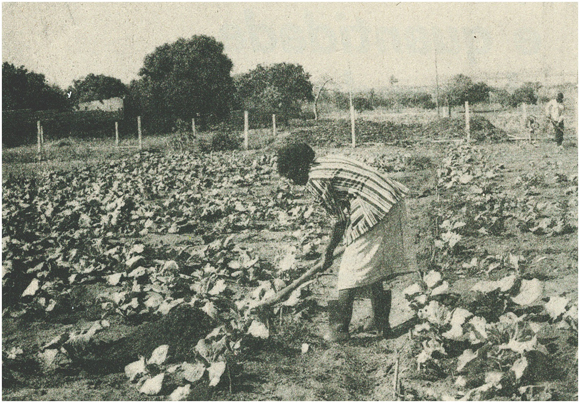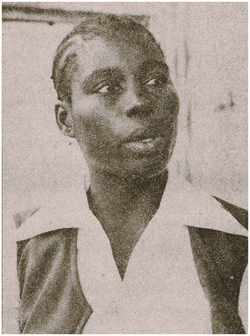Zonas Verdes (Green Zones),
1984-1994
Dossier MZ-0163
![]()

Above: A woman working cultivating vegetables in the Green Zones. It is worth noting that she is not carrying a baby on her back while she works, as is common in Mozambique and elsewhere in Africa, since the UGC organised a system of creches where mothers could leave their infants and small children.
The Green Zones (Zonas Verdes) system was a successful network of peri-urban small-scale agricultural producer cooperatives in the outlying Maputo suburbs, a system that was later extended to other cities and towns. The membership was made up overwhelmingly of women, who grew vegetables and bred pigs and chickens.
The Gabinete das Zonas Verdes (GZV or Office of the Green Zones) was established in April 1980 and initially reported directly to the presidency, although it was later absorbed into the Ministry of Agriculture. By the late 1970s, partly as a consequence of the war with RENAMO, the population of the outer suburbs had begun to increase sharply, and land ownership issues were arising in chaotic circumstances. At the same time food supplies were diminishing. The GZV supported the agricultural activities of the cooperatives, ensuring that they had security of land tenure, and attempting to guarantee that the members had access to social services including childcare, health services, and primary education. Members could also attend literacy classes.
In 1982–1983, a União Geral das Cooperativas (UGC or General Union of Cooperatives) was set up, based in the Zonas Verdes, and by 1987 it had 181 member organisations with over 10,000 members, of whom approximately 95 percent were women. The UGC marketed the produce from the cooperatives and acted as a supplier of seeds, fertiliser, and farming equipment. Most of the members had no previous access to land and were unemployed, and they were thus socially vulnerable. In the cooperatives, poor women were able to contribute to the economic survival of their families and to work in an environment over which they had some control through democratic cooperative structures.
Land law began to change after the 1980s in favour of commercial interests, and in 1991 the UGC voted to permit land and equipment to be held in the names of individual cooperative members. The average holding was about three hectares and about 20 kilometres from the city centre.

Above: Celina Cossa, president of the União Geral de Cooperativas de Produção in Maputo, in a photograph taken around 1985.
In 1982 Celina Cossa (see photo above) was elected president of the UGC, and under her leadership the Green Zones came by the year 2000 to be the main supplier of vegetables and chickens in the capital. The Green Zones movement was strongly influenced by an Italian priest, Father Prosperino Gallipoli (1932–2004), who arrived in Mozambique in the 1950s and who worked with the UGC from 1985 to 1995, continuing as a consultant for some time afterward.
![]()
Click on the yellow folder image below to download a zipped file of the dossier of press reports in PDF format concerning the Zonas Verdes. Note that new items may be added to this dossier from time to time. This version contains 31 items and is dated 1 March 2021.
![]()



![Aluka: Struggles for Freedom [subscription required] Struggles for Freedom](imgs/aluka_200.png)



